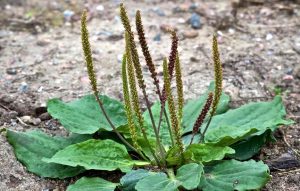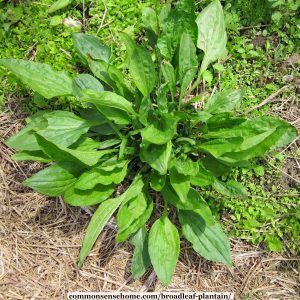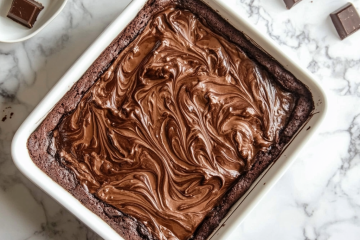
The prolific plantain weed as food or medicine
Plantain weed is often considered a “superweed” because of its incredible resilience and nutritional value. It’s a plant that gardeners may see as a nuisance, but it’s truly a gem in the world of wild edibles and medicine! That makes this article classified as both a Food Preparedness article and a Medical Preparedness article. One of its species may sound familiar to you as it’s the source of psyllium husk that’s a dietary supplement.
Now, before I go getting all excited allow me to warn you that you need to avoid harvesting the Plantain weed from areas that may be contaminated with pesticides or heavy metals. And there are some that could have allergies to it as well so you may want to start with just a little bit and check your tolerance level, but other than those two cautions this “weed” is amazing and prolific! I know it’s everywhere I look around me on the farm and even in the cracks of my driveway.
Plantain weed (Plantago major or Plantago lanceolata) is a common sight in gardens, lawns, and pavement cracks. It’s leaves are typically broad, oval, and slightly wavy with prominent veins running parallel from the base. Plantago lanceolata, the narrowleaf plantain species have long, slender leaves.
The flower stalks on the Plantain produce long, leafless stalks topped with dense, greenish-brown flower spikes.
All of the Plantain species have a strong fibrous root system which make them hard to uproot, almost as if they are begging you to try them as a food or a medicine rather than destroying them. *grin*
The Edible Parts of a Plantain Weed
First you have the leaves. These young, tender leaves are the best for eating raw, as they are less bitter. You can also sauté them as you would spinach. But I save the older leaves for cooking in soups or stews as they could use a little heat in coaxing their tenderness. You also have the seeds. The tiny seeds can be collected and ground into flour or used similarly to flax seeds. I don’t know of any use for their root system other than to leave them be and more will replace what you pick. Plantain weeds can produce multiple generations within a single growing season, rapidly increasing their population. As I said, they are prolific.
How to Harvest Plantain Weed
Pick the young leaves in the spring and early summer. You’ll also want to collect the seeds when the flower spikes turn brown. Shake the spikes and gently stroke them with your fingertips over a container to gather the tiny seeds.
Culinary Uses for Plantain Weed

Plantain Weed in the kitchen is edible
These weeds are one surefire way to get “fresh vegetables” in your diet in a crisis scenario. Use them in salads by simply chopping the young leaves for a nutritious boost. You can also blend them with nuts, garlic, olive oil, and Parmesan for a unique pesto. As I mentioned earlier, I like to sauté the older leaves with garlic and olive oil. For soups, you can add to vegetable or chicken soup for added greens. And you can even use them in baking by using the flour ground from the seeds or use the harvest seeds whole in your baking. Mind you, you can’t use the flour as the entire substitute for flour in a recipe. It will be quite dense.
Growing Conditions of Plantain Weed
Plantain weeds thrive in a variety of environments. Their tough nature allows them to survive and spread in less-than-ideal conditions. Each plantain weed can produce thousands of seeds. These seeds are tiny and can be easily dispersed by wind, water, or foot traffic. The seeds have a high germination rate and can sprout in a variety of soil conditions. They can remain dormant in the soil for many years, waiting for the right conditions to germinate. If you choose to, you can actually sprout the seeds as you would any other sprouts and compound the nutritional value of them.
Nutritional Value of Plantain Weeds
Plantain weeds are rich in vitamins A, C, and K. They contain the minerals of calcium and iron and they are high in fiber and plant-based compounds with anti-inflammatory properties.
This leads me to their medicinal benefits.
Medicinal Benefits of Plantain Weed
Plantain weed has been used medicinally anciently. The leaves can be crushed and applied to minor wounds, cuts, and insect bites to promote healing and reduce pain. As an anti-inflammatory, it contains compounds that can reduce inflammation. When ingested it can act as a mild laxative and can soothe the digestive tract. Lastly, I’m aware of its respiratory relief. Either the leaves or the seeds can be used in teas to alleviate coughs and bronchial issues.
Plantain weed has all kinds of brothers and sisters. Below I’ve listed for you all of the primary species and their descriptions. In the meantime, I’d love it if you sent me pictures of your Plantain dishes or flour that you made!

Edible Plantain Weed
Major Species of Plantain Weeds
- Common Plantain (Plantago major)
-
- Description: Broad, oval leaves with prominent veins. Produces long, leafless stalks topped with dense flower spikes.
- Habitat: Lawns, gardens, roadsides, and disturbed soils.
- Uses: Edible and medicinal properties, often used in salads, soups, and herbal remedies.
- Narrowleaf Plantain (Plantago lanceolata)
-
- Description: Long, narrow leaves with parallel veins. Also known as ribwort plantain.
- Habitat: Meadows, grasslands, and roadsides.
- Uses: Similar to Plantago major, used in traditional medicine for respiratory issues and wounds.
- Buck’s-Horn Plantain (Plantago coronopus)
-
- Description: Narrow, deeply lobed leaves resembling a buck’s horn. Produces small, clustered flower spikes.
- Habitat: Coastal areas, sandy soils, and disturbed sites.
- Uses: Young leaves are edible, used in salads.
- Hoary Plantain (Plantago media)
-
- Description: Rosette of oval, hairy leaves. Produces a central stalk with a cylindrical flower spike.
- Habitat: Grasslands, meadows, and roadsides.
- Uses: Traditionally used for its anti-inflammatory and wound-healing properties.
- Blackseed Plantain (Plantago rugelii)
-
- Description: Similar to Plantago major, but with reddish or purple coloring at the base of the leaves.
- Habitat: Lawns, gardens, and disturbed soils.
- Uses: Edible and medicinal uses similar to Plantago major.
- Water Plantain (Plantago maritima)
-
- Description: Narrow, fleshy leaves with a rosette form. Often found in saline environments.
- Habitat: Coastal areas, salt marshes, and saline soils.
- Uses: Edible leaves, used in traditional medicine.
Lesser-Known Species of Plantain Weed

Broadleaf Plantain weed is great for salads
- Plantago virginica (Virginia Plantain)
-
- Description: Small, narrow leaves and tiny, clustered flowers.
- Habitat: Grasslands, fields, and disturbed areas.
- Uses: Limited use, but sometimes considered for medicinal properties.
- Plantago patagonica (Woolly Plantain)
-
- Description: Narrow, woolly leaves with a dense flower spike.
- Habitat: Dry, sandy soils, and grasslands.
- Uses: Historically used by Native Americans for various remedies.
- Plantago ovata (Psyllium or Desert Indian wheat)
-
- Description: Narrow leaves and dense flower spikes. Known for its seeds, which are used to produce psyllium husk.
- Habitat: Dry, arid regions.
- Uses: Seeds are harvested for psyllium husk, a dietary fiber supplement.


